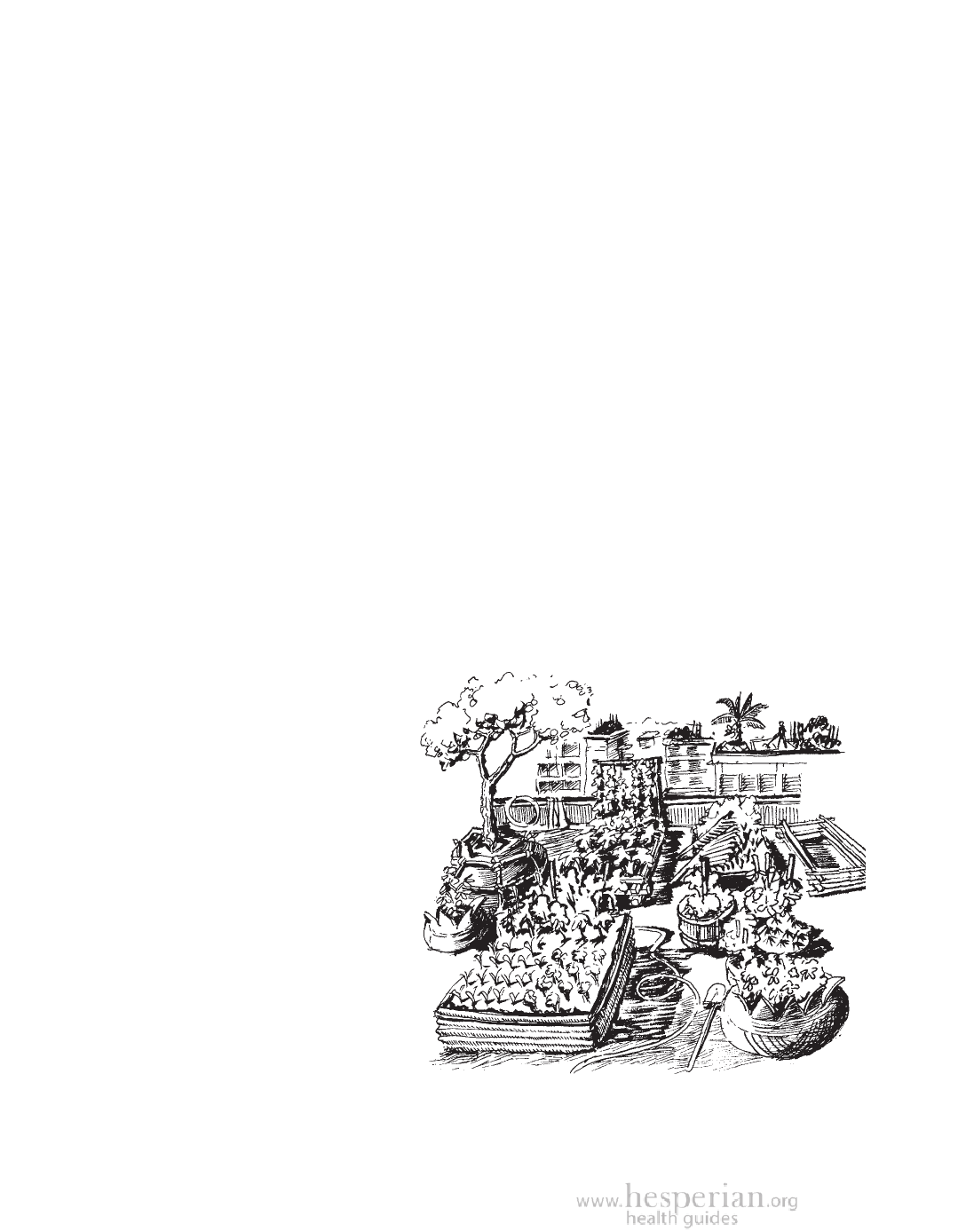
310 Sustainable Farming
Sustainable Farming in the City
More and more, people are creating farms and gardens in cities to feed
themselves, to create jobs, and to keep alive their knowledge and traditions of
working the land. Creating green spaces with crops and trees also improves
the air in cities, and reduces illnesses caused by air pollution, such as asthma.
Turning the empty spaces that often become trash dumps into farms and
gardens makes a city healthier and more beautiful.
Adapt farming methods to smaller spaces
• Grow plants upward on stakes, walls, or other supports.
The sides of buildings can be good places for climbing plants.
• Grow food crops on rooftops and balconies, in buckets, bags, tires,
tin cans, and old baskets. You can use any container that has a hole
for water to drain out. Leaf crops such as spinach and lettuce, and
vegetables like tomatoes, peppers, and eggplant, grow well in containers.
Bananas, figs, pygmy date palm, pineapple, dwarf citrus, and dwarf
mango also grow well in containers.
• Garden beds as shallow as 20 cm deep can be filled with organic
matter such as corn husks, rice or cocoa hulls, leaves, or even shredded
newspaper. Plant seedlings with a small amount of soil into holes in
the organic matter and their roots will spread. Over time, the organic
matter will turn to soil.
• Make raised planting
beds by double digging
(see next page) or by
piling soil 1 meter deep on
top of concrete surfaces
and enclosing it in large
containers.
A rooftop garden
• Sow seeds or seedlings
closer together than usual.
Plants grown this way will
adapt to the close spacing
over time.
• Grow more than one crop
together in a small space.
• Replant a new crop
immediately after
harvesting the previous one.
A Community Guide to Environmental Health 2012